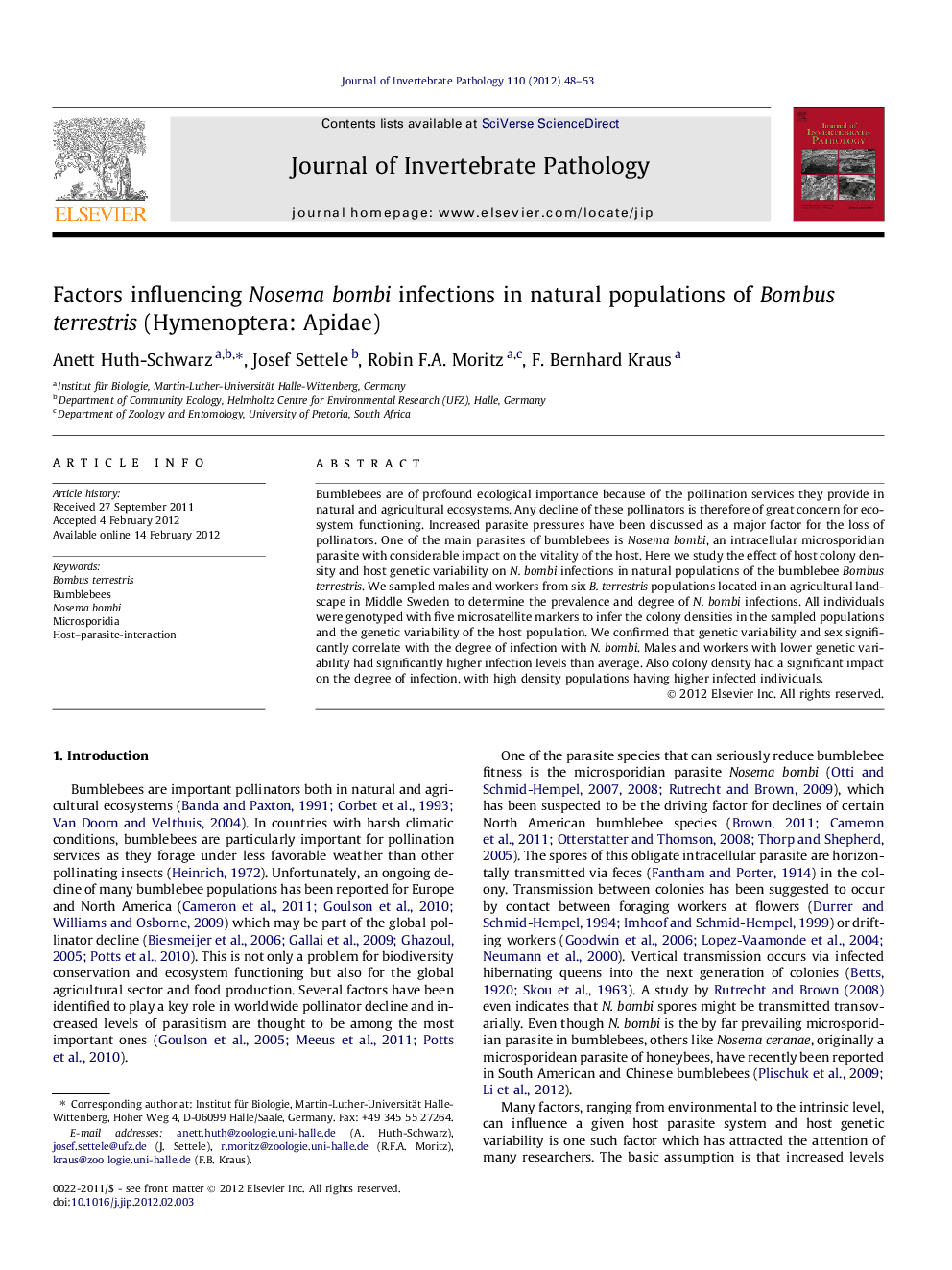| Article ID | Journal | Published Year | Pages | File Type |
|---|---|---|---|---|
| 4557921 | Journal of Invertebrate Pathology | 2012 | 6 Pages |
Bumblebees are of profound ecological importance because of the pollination services they provide in natural and agricultural ecosystems. Any decline of these pollinators is therefore of great concern for ecosystem functioning. Increased parasite pressures have been discussed as a major factor for the loss of pollinators. One of the main parasites of bumblebees is Nosema bombi, an intracellular microsporidian parasite with considerable impact on the vitality of the host. Here we study the effect of host colony density and host genetic variability on N. bombi infections in natural populations of the bumblebee Bombus terrestris. We sampled males and workers from six B. terrestris populations located in an agricultural landscape in Middle Sweden to determine the prevalence and degree of N. bombi infections. All individuals were genotyped with five microsatellite markers to infer the colony densities in the sampled populations and the genetic variability of the host population. We confirmed that genetic variability and sex significantly correlate with the degree of infection with N. bombi. Males and workers with lower genetic variability had significantly higher infection levels than average. Also colony density had a significant impact on the degree of infection, with high density populations having higher infected individuals.
Graphical abstractFigure optionsDownload full-size imageDownload as PowerPoint slideHighlights► In this study we examined factors influencing N. bombi parasitism in B. terrestris. ► We determined host genetic variability and colony density in natural populations. ► High density and low heterozygosity populations had higher degrees of infection per individual. ► Males had both a higher prevalence and a higher spore load than females.
